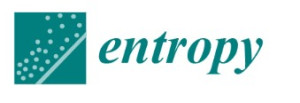
I’ve added the journal Interdisciplinary Toxicology (interTOX) to my list. The journal is associated with the Slovak Toxicology Society (SETOX).
In my opinion the journal is not aimed at communicating science but instead aims to promote a political agenda, namely that most manufactured chemicals cause harm to humans.
The journal’s editor-in-chief is Michal Dubovický. According to Dr. Paul Strode, author of the blog Mr. Dr. Science Teacher:
Dubovický has 53 career publications according to the Web of Science. Since June of 2008, when Interdisciplinary Toxicology was launched, he has published 27 times. Two of those publications were editorials in Interdisciplinary Toxicology and 10 were full length papers in the journal. So, 40% of Dubovický’s publications over the last six-and-a-half years are in his own journal!
The journal was brought to my attention recently because of a 2013 article it published co-authored by MIT’s anti-Roundup crusader Stephanie Seneff. The article was “Glyphosate, pathways to modern diseases II: Celiac sprue and gluten intolerance,” and it appeared in volume 6, number 4 of the journal in 2013.
Stephanie Seneff is a 65-yr-old computer scientist in the Department of Artificial Intelligence at the Massachusetts Institute of Technology. Like [her co-author] Samsel, Seneff has magically become an expert in glyphosate biochemistry and human disease while maintaining a career in artificial intelligence. Seneff’s last eight articles have also been published in the journal Entropy, which means she and her coauthors have spent $10,816.00 to publish in the last two years.

Wait, did he say Entropy? Yes, he did. Who publishes Entropy? MDPI, one of the publishers on my list. Stephanie Seneff and her co-authors have successfully used this MDPI journal as their own scholarly vanity press, publishing eight papers in it since 2012.
An excellent blog post about Seneff and her questionable research appeared in the ScienceBlogs blog Respectful Insolence on December 31st.
People with science/political agendas are increasingly using journals like Interdisciplinary Toxicology and publishers like MDPI to disseminate their work, work that quality journals will not publish.
When publishers like MDPI disseminate research by science activists like Stephanie Seneff and her co-authors, I think it’s fair to question the credibility of all the research that MDPI publishes. Will MDPI publish anything for money?
By: Jeffrey Beall
Follow on Twitter
Source: Scholarly Open Access
Comments:
Evert Nijenhuizen says:
January 8, 2015 at 9:48 AM
Entropy has an impact factor of 1.564. So, with other words, perhaps the SCI Index-system might be corrupted as well. This requires further investigation. We might have something big here.
Jeffrey Beall says:
January 8, 2015 at 10:21 AM
It’s feasible that some of the MDPI journals get cited a lot because so many researchers cite their articles to refute them as junk science. These additional citations drive up the impact factors, and this may be one of the reasons the publisher accepts the junk in the first place. Ditto for the articles’ altmetrics.
Sudesh Kumar says:
January 8, 2015 at 10:11 AM
but isn’t i true that such incidence can occur with any journal irrespective of it being open access or closed access? there is nothing to stop an editor-in-chief of a closed access journal from published his own papers in his journal or publishing papers ascribing to an agenda.
herr doktor bimler says:
January 8, 2015 at 4:03 PM
A case in point is the Journal of Inorganic Biochemistry from the Elsevier stable. Seems reputable enough, but they have published guest-edited Special Issues such as this one in 2011:
http://www.sciencedirect.com/science/journal/01620134/105/11
— guest-edited by Chris Exley, an aluminium-causes-everything anti-vaccine obsessive (and Seneff co-author), and packed with papers every bit as egregious as the open-access examples.
wkdawson says:
January 8, 2015 at 11:13 AM
I must admit that I was rather surprised at encountering this biosemiotic entropy… I really don’t have any idea what Knuth was thinking when he approved this series.
Moreover, some of the articles do not even have the word entropy anywhere in the body of the article. It doesn’t appear that the guest editor did much of anything or simply agrees with this view. The least that could have been done was tone down the assertions.
Anatoli says:
January 8, 2015 at 12:02 PM
Does it mean that journals should also inquire about the science/political agenda of the authors before accepting articles? Isn’t editorial and peer review enough? Let the public and blog writers do the former and journals do the publishing only instead off turning into social and political watchdogs.
Jeffrey Beall says:
January 8, 2015 at 1:50 PM
They’re not doing a legitimate peer review; that’s the problem. OA publishers want to earn as much money as possible so they accept unscientific papers and then pocket the author fees. MDPI published eight papers from this author in two years.
bueller007 says:
January 8, 2015 at 12:38 PM
See also this PubPeer thread. All of Seneff’s Entropy publications were in a single special edition of the journal, which was edited by a linguist who advocates unorthodox health views and who later coauthored a publication with Seneff that made heavy use of references from the “special edition”.
https://pubpeer.com/publications/C7497636B078354505F94D13F72C27
herr doktor bimler says:
January 8, 2015 at 12:57 PM
publishing eight papers in it since 2013
I think you mean “since 2012”.
All but one of those articles were in the “Special Issue Biosemiotic Entropy: Disorder, Disease, and Mortality”, which might more accurately have been called the Seneff Special Issue. Dates are confusing because the Special Issue was released in dribs and drabs over a couple of years.
It doesn’t appear that the guest editor did much of anything or simply agrees with this view.
The guest editor (John W. Oller, Jr) was an antivax loon who writes about the “autism epidemic”. Let us say that he had an agenda.
Her most recent paper — “Biological Water Dynamics and Entropy” — is an attempt to rehabilitate Homeopathic Magic Water, disguising it in a sepia bafflegab cloud of
quantum coherent nanomolecular clusters of magnetized water.
herr doktor bimler says:
January 8, 2015 at 1:32 PM
I am surprised that Seneff and co. published “Biological Water Dynamics and Entropy” in “Entropy”, when it would be more appropriate for “Water” — another journal from the MDPI, devoted to “the special properties of the second phase of liquid water, resulting from its quantum-coherent behaviour at room temperatures plus an alternative value of the phase of the quantum vacuum”.
RobRN says:
January 8, 2015 at 5:23 PM
Jeez – That’s all we need… MORE of Stephanie Seneff’s pseudo-scientific word salad available as ammunition for use by fringe elements!
Sunday Brownson Akpan, Nigeria says:
January 10, 2015 at 5:31 AM
Hello Beall
Please comment on the following journals/publishers.
Should i submits manuscripts to them?
(1) Expert journals of Economics (www.expertjournals.com)
(2) Journal of Global Agriculture and Ecology published by International Knowlegde press
(3) Mitteilungen Klosterneuburg (http://mitt-klosterneuburg.com/)
Anticipating your responses
Jeffrey Beall says:
January 10, 2015 at 9:10 AM
(1) Expert Journal of Economics (www.expertjournals.com)
I had not heard of this publisher before (Expert Journals). I analyzed it and found that it meets the criteria for inclusion in my list, so I have added it. I would recommend that you not submit your papers here. The journals are all broad in scope, perhaps to increase submissions and therefore revenue, and all four journals have the same co-EiCs, at least one of whom is the owner of the outfit.
(2) Journal of Global Agriculture and Ecology published by International Knowledge Press.
As far as I can tell, International Knowledge Press is not an open access publisher. I limit my work to open-access journals and publishers, so I have not fully analyzed this publisher. My guess is that this publisher’s journals have very few subscribers, so in submitting your work here you’d not be getting very much exposure for your work.
(3) Mitteilungen Klosterneuburg (http://mitt-klosterneuburg.com/)
This is the hijacked version of a legitimate journal. Please ignore the version of the journal that is at this website. See my list of hijacked journals here: https://scholarlyoa.com/other-pages/hijacked-journals/





